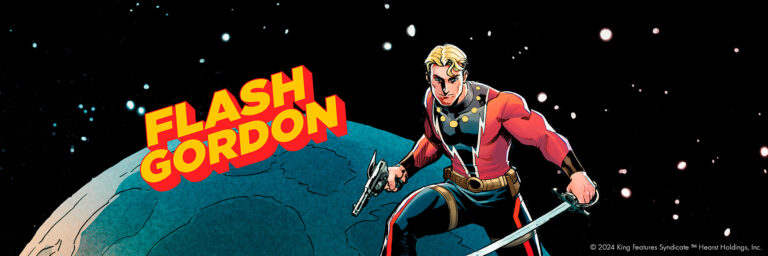
A Flash For Everyone! Flash Gordon #1 Is Now Available!
Legends never die. Since its debut in 1934, Alex Raymond’s Flash Gordon has captured the imagination of readers worldwide with its dynamic storytelling, captivating artwork,
The future is fungal! Coming this March is an all-new original graphic novel from Mad Cave Studios, The Mushroom Knight, the debut title from Pacific Northwest writer, artist, and mushroom enthusiast Oliver Bly.
A chivalrous faerie mushroom embarks on a quest to uncover a clandestine threat that has brought calamity to his magical woodland kingdom.
An adolescent girl from northwest Philadelphia desperately searches for her lost dog.
As their destinies coalesce, a whimsical friendship forms. But peril is nigh, and their respective journeys threaten to challenge the foundation of their realities… and reality itself.
Mad Cave Studios’ marketing manager, Maya Lopez, sat down with Oliver, writer and illustrator of The Mushroom Knight, to chat about his inspirations, his creative process, the ins and outs of ecology, and more! Read on for the full interview!
Q: Thank you so much for taking the time to answer our questions today, Oliver! Can you please tell us a little bit about yourself?
I can. I am originally from Philadelphia, but a little over a year ago I moved to Western Washington, near the Puget Sound.
I am an artist—vocationally I primarily work as an animator, working in stop-motion and motion graphics, usually, on things like films, commercials, music videos and the like.
I am a bit eccentric. I have a tendency to stuff my pockets full of hobbies and interests. Comics are in my breast pocket, near my heart, next to a few other precious things. For the past several years I’ve been doodling away on my own stories in my spare time between jobs. But The Mushroom Knight is my first real comic book.
Q: In The Mushroom Knight, we follow Gowlitrot the Gardener on his fantastic journey as his destiny collides with Lemuelle, a human girl on the hunt for her missing dog. What was your biggest inspiration in writing this story?
I am inspired by the concept of ecology, which is the study of relationships between organisms in an environment, and between those organisms and their environment. It’s about how we are relating, and you can take that concept and see it in any other system that can be broken into parts. There is an ecology of parts within our personalities, in our minds, so there’s a psychological ecology. Our emotions have an ecology, and how we understand our emotions, how we express them, how they relate to each other and how they relate to the emotions of other people and our environment, there’s a story there that’s worth telling. And you also have spiritual ecologies, that you see in religious and magic systems through time, mystical people trying to chart and map unseen biomes to give name and form to complex idea structures that may be beyond what human consciousness evolved to perceive at base level, and might be of use to heal us and move us forward.
And these systems aren’t self contained, they are all interrelated. Subsequently, I don’t believe we will “save the earth”, or remedy a lot of the systemic issues that are hurting us, until we start to interrogate the mystery of human personality and begin to propagate a widespread compassionate awareness of how our species evolved to be in this place at this very moment. Deep healing comes with deep understanding. What is happening in our natural world is a direct reflection of what is happening to us internally as individuals, and together in the larger system of humanity. We are not inside or outside the natural world, we are the natural world.
So that’s the thematic inspiration, the seed or spark, and it is planted in the trappings of a children’s fantasy cartoon, because this tale is about an adolescent girl whose personality is forming, and she sees the world through the lens of the tools her culture has given her, which for the most part are pop culture stories. But it’s also the tale of a little mushroom faerie who comes from the world of nature and of spirit, and so the aesthetic also reflects that lens, which is far stranger, far more alien. Together Gowli and Lem make up the two lenses in a pair of glasses, and those glasses are The Mushroom Knight, and the invitation of the book is to put those glasses on, and to start looking around. It is an ecology of art, and how you relate to it is part of it. It is a mystery book, and the mystery at the center is us. But it’s also a fantasy story, with magic and swords. It’s that, too.
Q: Can you tell us a bit about your personal connection to The Mushroom Knight?
The Wissahickon, where the story takes place, and where the fae creatures live, is a 1,800 acre nature preserve that cuts through part of the North-Western region of Philadelphia. It really is a special place, with a particular vibe, and many people use it to get away from some of the abrasiveness of concrete living. It’s immersive, it feels like a fantasy setting, but it is right next door to Philadelphia, which is a hard reality. Two lenses, one pair of glasses.
I was lucky to live close to its perimeter for a few years, during a vulnerable time in my life when I really needed help. And this woodland, for me, was a calm and caring place to reset, to stretch my legs and my imagination and to enjoy peace and solitude. I volunteered there, and I got to meet some incredible people who keep places like this healthy and functional. So I am very thankful for my time there, and in a way this book is a bit of a love letter to the Wissahickon.
Q: What initially got you into comics?
They were gifted to me, I think, as soon as I was reading on my own. That was when comics were still sold in gas stations and grocery stores, and they were significantly cheaper. My parents would sometimes grab a handful of them at the checkout as a treat for when something special happened, or when I was really sick. But since they were grabbed willy-nilly, and the stories were serialized, I had an interesting reading experience. I might have issues 86, 87, 92, and 95 of a single title, but that was it. Just those four. I had to use my imagination to fill in the blanks, and I never had a number 1. This likely influenced the story structure of The Mushroom Knight, which starts en media res, jumping into the characters lives as if they were already existing before you got there.
But I was really enthralled by them. They were often darker and more interesting than kids television at the time, and in spite of being sold in mainstream places like airports and bookstores, they felt underground. A lot of the heroes and titles (outside of the big ones like Superman etc.) hadn’t hit the zeitgeist yet, so when you met them as a kid, they felt like they belonged to you, they were part of your culture. They were mysterious and compelling and if you met another kid who knew them, you had a certain kind of bond. You were both part of a subculture and you shared a specific kind of excitement. I think that is what has kept comics alive over the years, that special feeling, and the fellowship fans have with each other, even when they’re arguing and hurting each other’s feelings, which happens a lot now on the internet.
There were also the newspaper funnies, which I read daily. Newspaper comic strips, Peanuts especially, are a big influence on The Mushroom Knight. You can see it in some of the character designs, but also in some of the gags and panel formatting.
Q: Which character in The Mushroom Knight do you personally connect with the most?
Oh, all of them have a piece of me in there.
When I was younger—maybe Lem. I was shy, overweight, and I struggled with bullies and with being seen and feeling safe. I sat on a lot of my potential and missed out on a lot of experiences because I was afraid and self conscious. When I was in my early 20’s—maybe Gowlitrot. Intellectually based, but naive, and maybe arrogant. Now? Maybe Erdagaude, the cryptic femme fatale who incites Gowlitrot and is at the center of his personal mystery. Or The Chief, Gowlitrot’s boss, who has a lot of things on his plate, and usually needs a nap.
Q: In The Mushroom Knight, readers are treated to lovingly-detailed, microscopic views of the worlds around them, and just beyond their eyes. Is there any special research that went into the creation of this story?
Very much so, a lot of reference went into the details of the plant and animal life in the setting. I tried to get it as right as I could, to make sure I was drawing things that belonged where I was putting them, but at the end of the day I am a cartoonist and there are moments where I’m drawing a quick symbol of a thing, and not the thing itself. But I wanted the fantasy elements to be balanced by the concrete observable reality of the parkland and the city of Philadelphia. The book is about fantasy, and about reality, and how the two interrelate. So both needed to feel complicated and tangible.
There are layers of observations in each page, little easter eggs, from the Dwarf Crested Irises that flank the path to Gowli’s house (you need eyes ornamented with the ability to see little things if you hope to find your way there) to the “Do Attend” flier stapled to a utility post in the city (I’ll leave you to google that one on your own.) So there’s not just research going into the natural aspects, there’s research going into the sociological and mythological vantage points, too.
Q: What do you hope for readers to take away from The Mushroom Knight?
I hope they put this volume down feeling intrigued, which is a mixture of feeling confused and pleasantly compelled. I hope their curiosity is tickled. Admittedly, this is a strange book told in a strange way, it’s not as orthodox as the surface premise suggests. The other side of intrigue on the emotional pendulum is frustration, which can be a turn off, but is natural, and a risk I took.
But this volume is just part one, it’s just a bit of the first act, and there is more story to come, I promise. Sewing seeds is hard work, but there’s a harvest ahead. I hope you stick with us on this road, I’ve been building it with you in mind, and I think the juicy fruit at the end will be worth the labor.
Q: In The Mushroom Knight, you’re credited as both the author and illustrator! Can you tell us a bit about your creative process?
On one hand, I really enjoy the intimacy and immediacy that comes with creating alone. But it’s hard work, making comics, there’s a lot that goes into it and a lot of things you need to keep spinning, and it can be lonely. I like collaboration, and I’d be interested in someday expanding this world with another creator or creators, especially another illustrator.
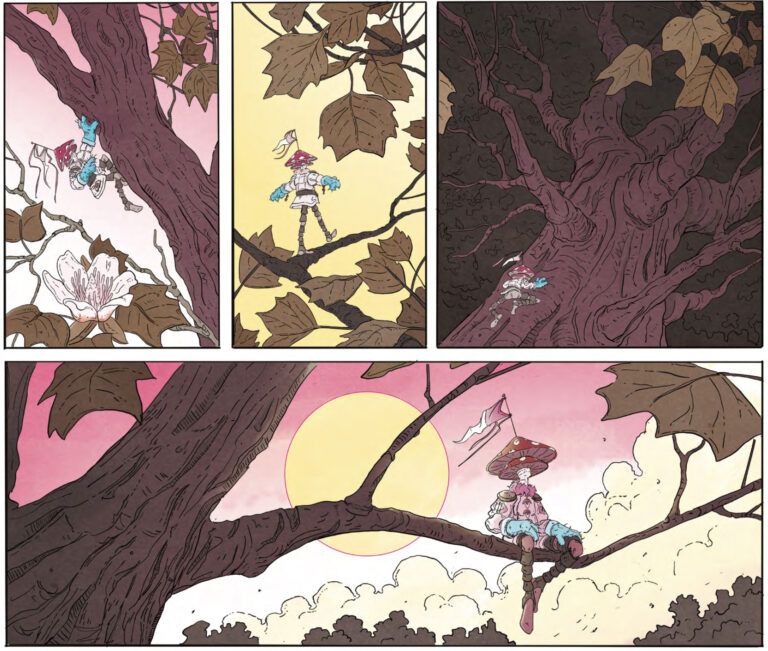
Q: Who/what are your biggest influences as a creator?
Always hard to say, I think I pull on a collection of them. I think as an artist you want diverse sources and to mix and match so you start creating something that isn’t derivative and feels true to your voice. Kind of like the ecosystem, you want diversity in there, a monoculture is susceptible to collapse.
I studied film and animation, independent animation really left an impression on me. I studied the German animator Lotte Reiniger at a formative time, she made these splendid cut out paper silhouette films, and a lot of my character design silhouettes and panel compositions probably unconsciously grew from lessons learned there. Jan Švankmajer taught me about telling story through abstraction, through texture and tone, and how to speak to the parts of our minds that sleep behind the curtains. Yuri Norstein, Priit Pärn, their works might not really look like mine, but because they work in ways I do not, I can go to them and break up some ice, get a new perspective, which is important. It contrasts and sharpens you, and makes you more interesting, I think. Sometimes I’m even influenced by things I do not personally like or agree with, because that friction can cause a fire within, and fire is maybe the most crucial element in the artist’s forge.
Q: What are your favorite stories/artists/genres?
I love mysteries, John le Carré is a favorite, and I think you can see his influence, strangely enough, in The Mushroom Knight, which is as much a mystery book, perhaps even moreso, than it is a fantasy book. There’s the quest elements, the hero’s journey kind of tropes, but at the heart there’s a mystery that points to a larger network of mysteries at the core of our human crisis.
This first MK book hits a bit like Tinker, Tailor, Soldier, Spy. If you imagine that, mixed with fantasy, mixed with 90’s pop culture… that’s close to the recipe, that plus a few secret ingredients that funk it up. John le Carre’s novels make you think, and I like that. You have to pay attention. You have to wake up.
Q: Any upcoming projects we should know about?
Right now all my energy is going towards The Mushroom Knight, and finishing volume 2.
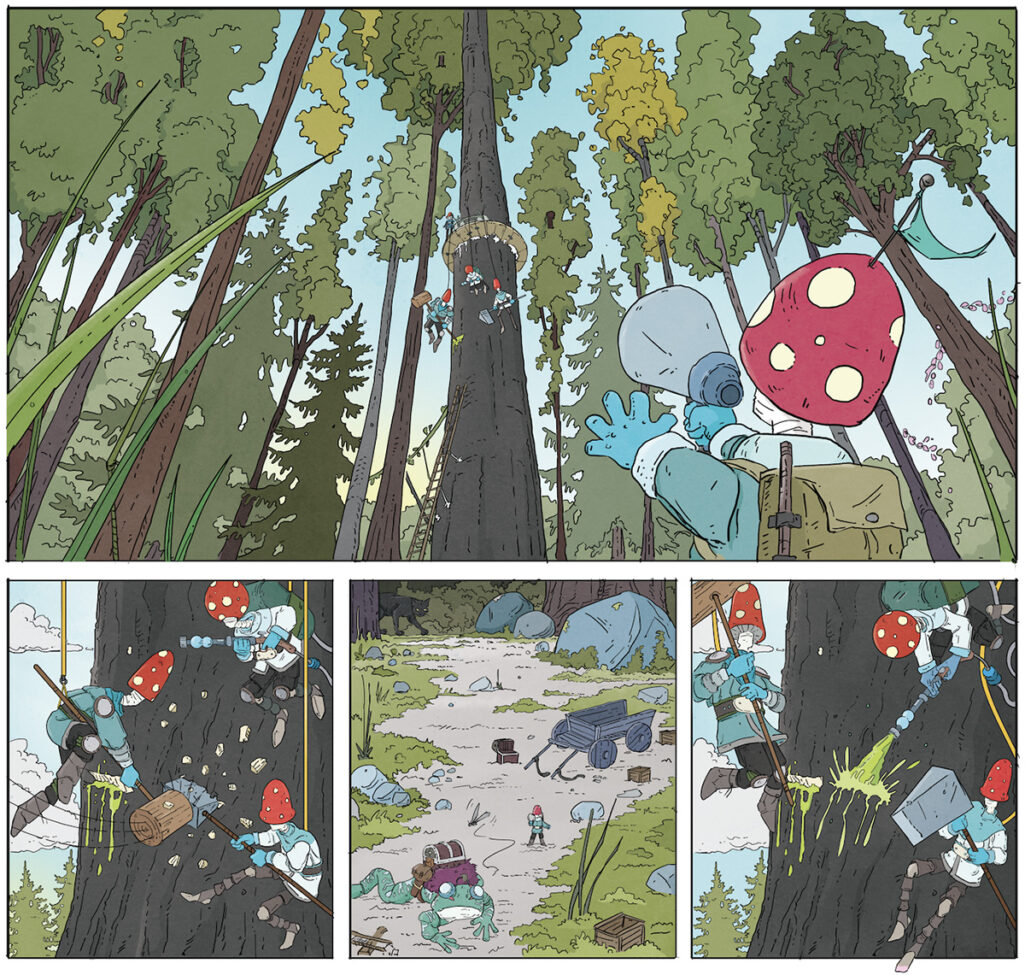
Q: Any cons you’ll be attending in the near future?
Emerald City Comic Con is up next! I will be in Artist Alley at table M-06. The M stands for “mushroom” and the 6 stands for the number of letters in k-n-i-g-h-t. Remember that and come say hello!
Q: Anything else you’d like to share?
I suppose I’d just like to thank Mad Cave Studios for this opportunity, for taking a chance on me and this book. And I would like to express gratitude to all of the readers who pick up The Mushroom Knight and give it a shot. There are so many things vying for your attention right now, for your time, and for your money, more things than ever in history. It is meaningful to me that you stopped by my little grove to see what I’ve been conjuring and growing underneath the oaks and hemlocks, down by the burbling creek.
Thank you.
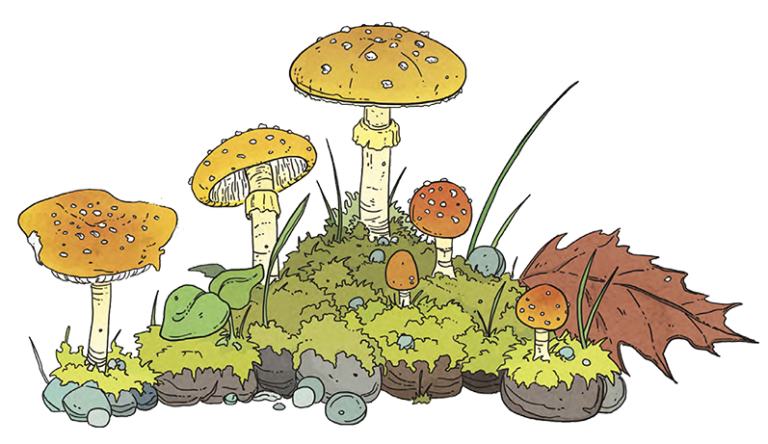
Writer/Artist, Oliver Bly
Oliver Bly is an animator, cartoonist, tin whistler, archer, and mycology enthusiast living in Olympia, WA. The Mushroom Knight is his first graphic novel work.
“At the crossroads of pop art, ecology, esotericism, and fable, a tiny thing has sprouted from the topsoil. That thing is The Mushroom Knight—a graphic novel that has incubated for a very long time in the cavern of my imagination… a Mad Cave, indeed.
The Mushroom Knight is now available for pre-order on the official Mad Cave Studios website, and will be available at your favorite bookstore, local comic shop, and digital comic reader on March 5th, 2024! Be sure to keep up with Mad Cave Studios on social media for updates, sneak peeks, and so much more!
Share:

Legends never die. Since its debut in 1934, Alex Raymond’s Flash Gordon has captured the imagination of readers worldwide with its dynamic storytelling, captivating artwork,
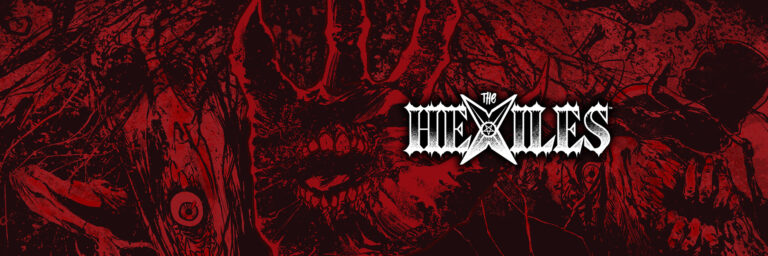
Coming this ‘Hell-oween” Mad Cave Studios announces new horror from Cullen Bunn and Joe Bacardo! From the ashes of their father’s sins, a new legacy
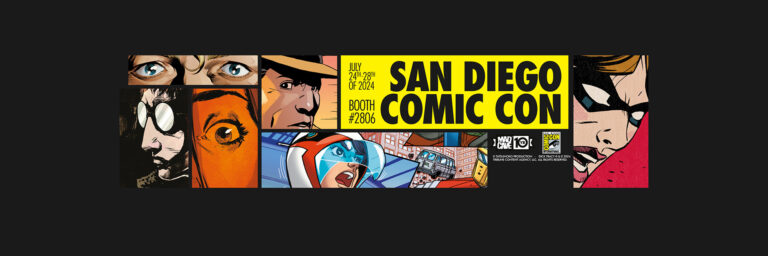
In light of our 10th Anniversary celebration, we’re thrilled to mark a decade of creativity and community at San Diego Comic Con 2024! Join Mad
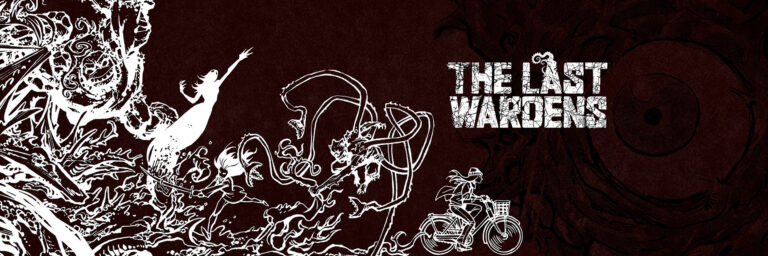
America, 1975. Where the scare sets in, a story unfolds. We are excited to share the first issue of thrilling new supernatural horror series, The
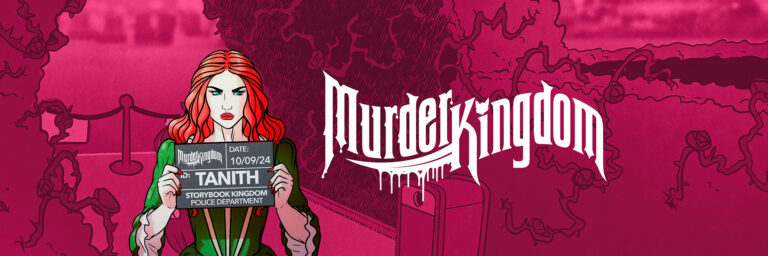
Once upon a time, in a strange land called Florida… We’re thrilled to announce MURDER KINGDOM, the toon-themed terror comic from six-time New York Times
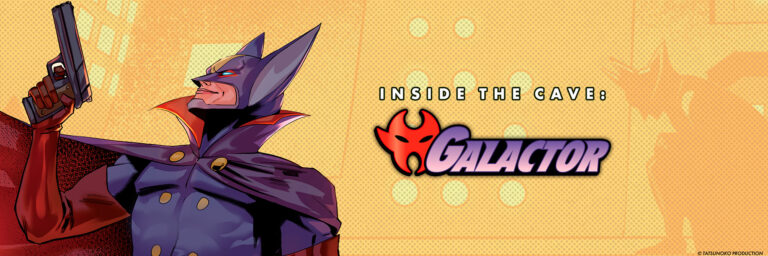
Kneel before the might of Galactor, worms! The first issue of the highly-anticipated miniseries from Mad Cave Studios, Galactor, written by Steve Orlando, and illustrated